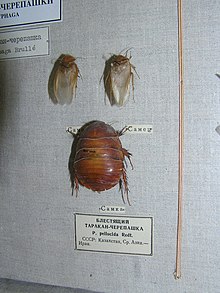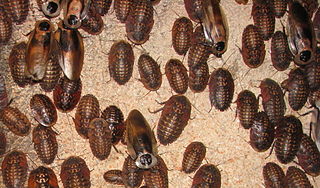
Giant cockroaches, or blaberids, are the second-largest cockroach family by number of species. Mostly distributed in warmer climates worldwide, this family is based on the American genus Blaberus, but much of the diversity is also found in Africa and Asia.

Blattidae is a cockroach family in the order Blattodea containing several of the most common household cockroaches. Notable species include:

Ectobiidae is a family of the order Blattodea (cockroaches). This family contains many of the smaller common household pest cockroaches, among others. They are sometimes called wood cockroaches. A few notable species include:
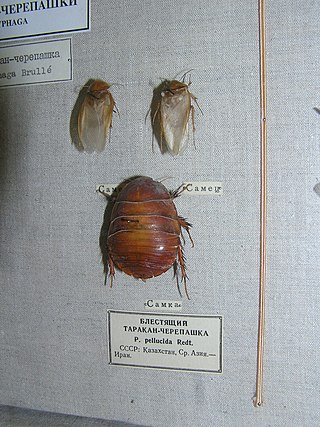
Corydiidae, previously known as Polyphagidae, is a family of the order Blattodea (cockroaches). Many are known as sand cockroaches. The family is divided into five subfamilies, comprising some 40 genera. One prominent species is the desert cockroach, Arenivaga investigata.

Nocticolidae is a small family in the order Blattodea (cockroaches). It consists of only 32 known species in 9 genera. They are found in Africa, Asia and Australia. Most live in cave habitats, although a few are associated with termites. Cave adapted species are known from the Cenomanian aged Burmese amber, making them the oldest extant cavernicolous organisms.

The Myrmecophilidae or ant-loving crickets are rarely encountered relatives of mole crickets. They are very small, wingless, and flattened, so resemble small cockroach nymphs. The few genera contain fewer than 100 species. Ant crickets are yellow, brown, or nearly black in color. They do not produce sound, and lack both wings and tympanal organs ("ears") on the front tibia.
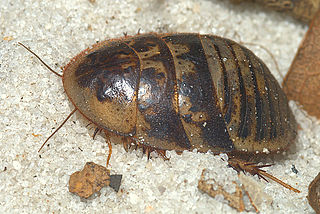
Arenivaga is a genus of sand cockroaches, of the subfamily Corydiinae, in the family Corydiidae. These cockroaches live in sandy soils and dunes in the southwestern United States, Florida and Mexico. Arenivaga comes from the Latin arena meaning sand and vagus meaning wandering.
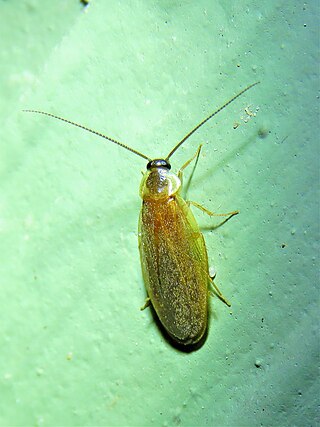
Compsodes is a genus of hooded cockroaches in the family Corydiidae. There are at least four described species in Compsodes.

Trigonidiinae is a subfamily of insects in the order Orthoptera, suborder Ensifera, based on the type genus Trigonidium. They are often referred to as sword-tail crickets, winged bush crickets or trigs.
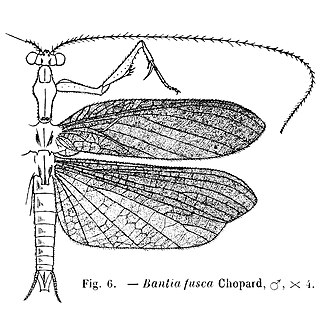
Thespidae is a family of insects in the order Mantodea. Following a major revision of this order in 2019, the old-world subfamilies Haaniinae and Hoplocoryphinae, previously placed here, have been upgraded to family level. Many genera are Neotropical, but the Thespinae are represented in Africa, Asia, Europe, and North America.

Panchlora is a genus of cockroaches in the subfamily Panchlorinae, erected by Hermann Burmeister in 1838. Species are mostly found in the Americas and Africa. Most species in this genus are green in colour, but some are cream or grey.

Ectobius is a genus of non-cosmopolitan cockroaches once thought native to the Old World and described by Stephens in 1835, belonging to the family Ectobiidae, subfamily Ectobiinae. The discovery of 4 ectobius cockroaches in Colorado dating to 49 million years ago suggests the genus actually originated in North America. This genus has been subject to a number of revisions.

Polyzosteria is a genus of around sixteen species of cockroaches in the Blattidae family native to Australia. Some of these insects are attractively marked, such as Polyzosteria mitchelli. The type species of the genus is the Botany Bay cockroach, Polyzosteria limbata.
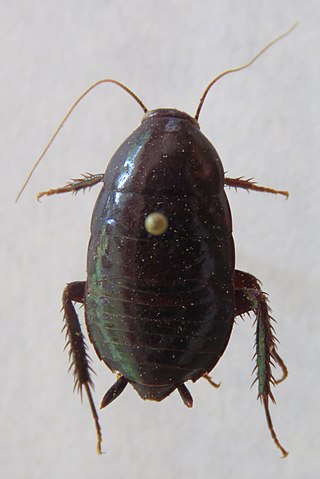
Lamproblattidae is a small family of South and Central American cockroaches in the order Blattodea. It consists of three genera and 10 species:

The Pseudophyllodromiinae are a subfamily of cockroaches, in the family Ectobiidae, with a world-wide distribution.
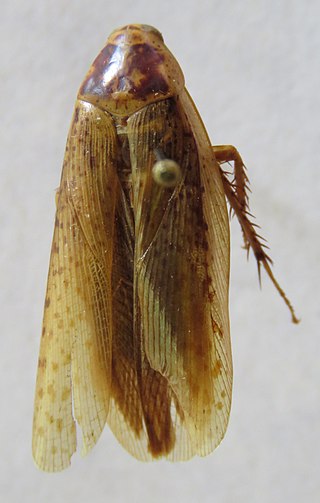
Epilampra is a genus of cockroach in the family Blaberidae. There are more than 70 described species in the genus Epilampra.

Rhabdoblatta is a genus of cockroaches in the subfamily Epilamprinae. Species have been recorded from Africa, East, Southeast and South Asia.

Latindia is a genus of cockroaches in the family Corydiidae. There are about nine described species in Latindia.
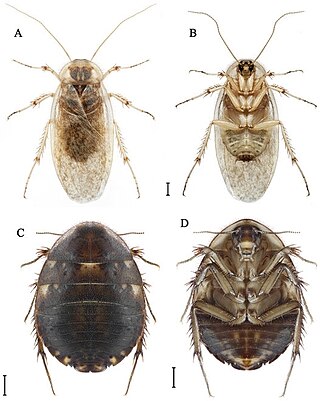
Hemelytroblatta is a genus of mostly Palaearctic cockroaches, in the subfamily Corydiinae, erected by Lucien Chopard in 1929. Species are distributed mostly in: North Africa, eastern Mediterranean countries through to central Asia; the type species, Hemelytroblatta cypria is found only on Cyprus.
